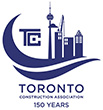How Building Science Affects Home Comfort?
Contemporary home construction has a huge advantage over methods used in the past and that is the practice of building science. A century ago, home builders thought of each part of the home separately, without considering how those component parts would be working together to provide a comfortable, safe structure - over time, this building methodology can cause long term problems, damage, and uncomfortable living situations. In today’s practice of building science, each part of the home is considered in relation to the other - it’s a global view of how everything must work together to create the best possible outcome.
Those outcomes include good air quality, no air leaks, a stable indoor temperature, and an efficient HVAC system, all of which are greatly affected by adequate insulation and ventilation.
Building Science
The building science house results in a house-as-a-system approach which is the basis of energy efficient construction. It results in a more durable, energy efficient, and comfortable house because the influence that each individual component has on the whole is taken into consideration during the design and construction phase. There are three major parts of a building science approach to home building:
- the building envelope
- the mechanical systems
- the occupants and their needs
Regardless of whether or not your home was built with building science in mind, it can still be applied when performing renovations or retrofits. For example, the house-as-a-system approach can help you avoid problems that may arise when installing new insulation, which could affect those three parts: the home may now be more air tight, but that may cause additional stress on the mechanical systems, which in turn may affect someone’s indoor comfort. Better insulation may result in more energy efficiency, but that efficiency may come at the cost of other parts of your home.
Three principles of the building science approach are:
- Heat moves from hot to cold
- Water and air move from high to low pressure
- Moisture migrates from wet to dry
Understanding these principles is important because they result in better durability of materials, greater indoor comfort and safety, and improved energy efficiency.
Occupant Comfort
While a well running and maintained home is a great benefit of the building science approach, greater personal comfort for you and your family is the prime motivation of using building science in the construction or retrofit of your home. Factors that affect your comfort indoors are:
- Temperature
- Humidity
- Air movement
- Sound
- Indoor air quality
- Radiant exchange
Adequate and balance temperatures are very important to indoor comfort, and are affected by air temperature, humidity, air movement, and radiant temperature. Often overlooked by contractors and homeowners, indoor air quality plays an equally as important role as temperature. The construction or retrofit of a home can cause of a lot of pollution and chemicals to enter the home through off gassing and inadequate ventilation. The maintenance and monitoring of indoor air quality can often be addressed through the building envelope, and is key to providing a safe and comfortable living environment.
The Building Envelope
A building envelope is the barrier between the inside of your home and the outdoor environment, and consists of parts such as:
- The roof/ceiling
- Exterior walls
- Windows and doors
- Basement walls
- Basement floors
Your building envelope plays a huge role in the indoor comfort of your home as it helps to keep air conditioning in and the elements out. Heat transfer through the building envelope will contribute to drafty rooms and heat loss, as well as increase your energy consumption.
In our modern rush to make our buildings more energy efficient, some contractors have designed and made their building envelope too air tight, which may aid in the cause of Sick Building Syndrome, mold growth, and other problems that arise from restricted air flow. The best building envelope simultaneously protects your home, contents, and comfort, while providing a safe and balanced interaction between the indoors and out.
Building Science and Your Home
An approach to home building and renovating that takes into account the home-as-a-system approach of building science results in homes that are more energy efficient, comfortable, and easier to maintain. Taking the principles of building science into account when adding new insulation to your home can help you get the best out of your new product, from a longer lifespan to better performance, and represents the future of home building in Ontario.



